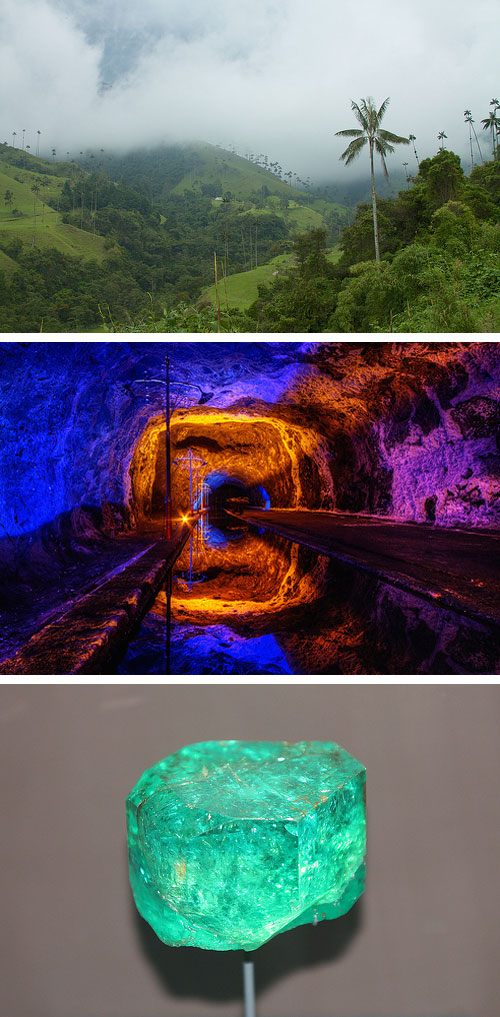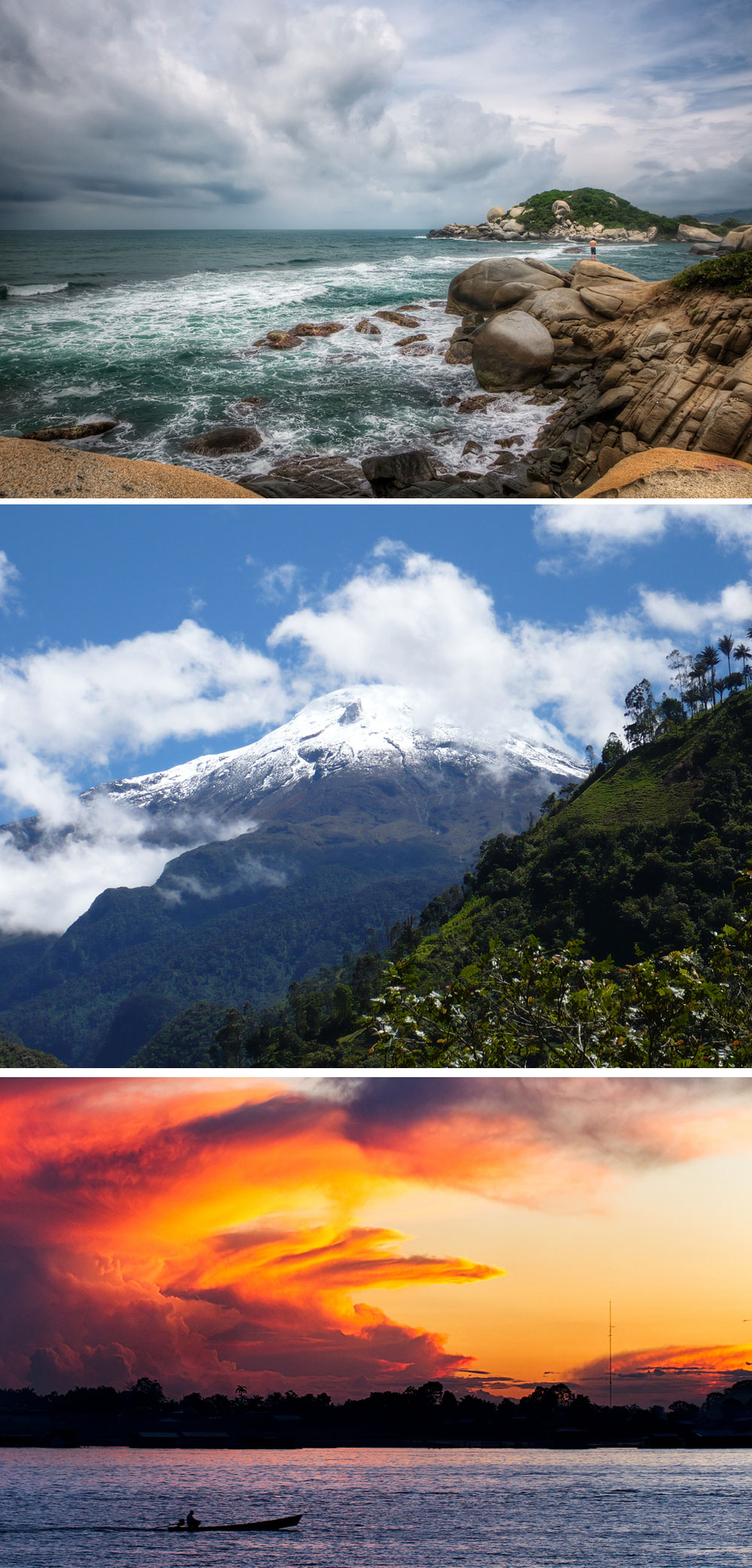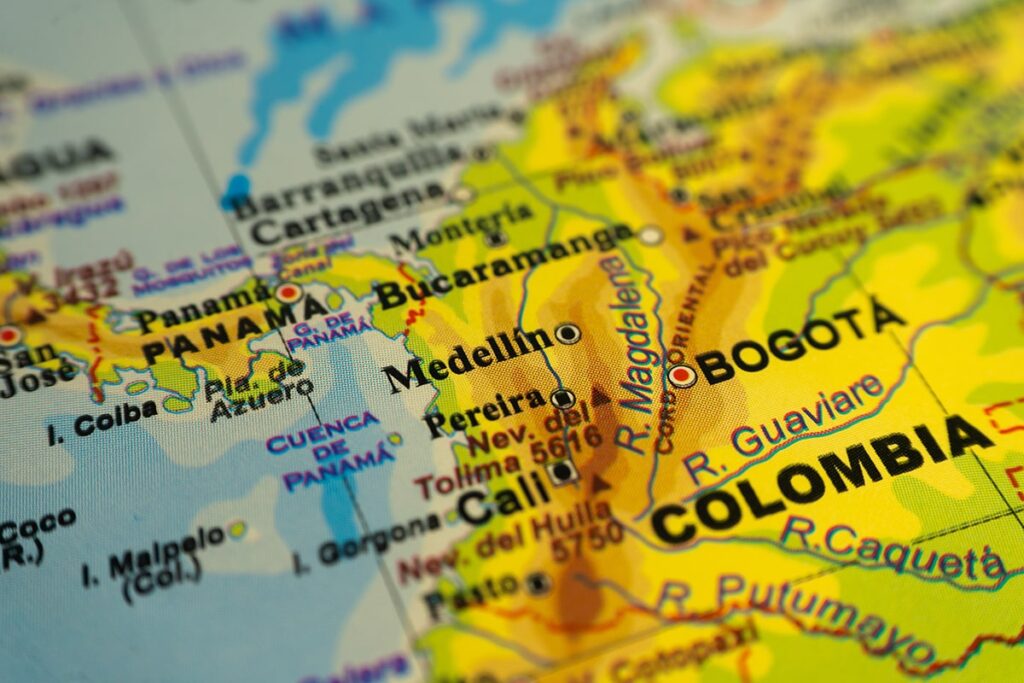1. Geographically unique: Colombia is the only country in South America that has both Pacific and Atlantic coastlines. In addition, it is also the only South American country connected to North America (via Panama)
2. East and West: The Andes Mountains separate the populated low-lying coastal areas in the west with the almost uninhabited jungles in the east. The jungles cover 54% of Colombia’s land, but only house around 3% of the population
3. Mixed crowd: Colombians are a mixed race; around 20% are descended from Europeans, while only around 1% are indigenous Indians (who live in the jungles of the east). The largest group is the ‘mestits’ (58%), a mix of whites and Indians. In addition, there are also blacks (4%) and mulattos (14%), as well as mixtures of blacks and Indians (3%)
4. Isolation: Colombia’s population lives largely in separate clusters, largely due to the Andes Mountains separating the country into different areas. Some live in the coastal lowlands, others in isolated mountain valleys and the capital – Bogotá – is located in a desolate mountain basin at 2,640 meters above sea level.
5. Many natural resources: Colombia’s abundant natural resources are an important factor in the country’s economy. Colombia is responsible for a large part of the world’s emerald production, but gold, silver and platinum are also produced in significant quantities. Coal production is also the largest on the South American continent. In addition, the country is world-renowned for its coffee production. Oil is also available, but production is sabotaged by guerrilla groups, which hinders development and progress in this area

Fact: Colombia is rich in natural resources. Top: a coffee plantation, middle: a salt mine and bottom: an emerald
6. Early history: The oldest archaeological finds in Colombia date back to 20,000 BC. Around 10,000 BC, present-day Colombia was inhabited by indigenous tribes living in hunter-gatherer societies. In the first millennium BC, certain groups of the population began to develop a political system (Cacicazgo) where power was distributed in a kind of pyramid structure
7. Colonization: In the early 1500s, Spanish colonists arrived in Peru. Here the exploration and colonization of the country also began. The indigenous population (the Indians) was greatly reduced due to the violent colonization, but also due to foreign diseases such as chickenpox. In the 1600s, colonists began bringing slaves from Africa to Colombia
8. Independence: From the very beginning of Spanish colonization, there were several rebellions for independence – their small size made them insignificant and the larger ones were all put down. From 1810, however, power began to change hands and in 1819 Colombia finally gained independence from the Spanish under the Venezuelan-born Simón Bolivar
9. Civil wars: In the 1800s and 1900s, there were 3 civil wars in Colombia: The Colombian Civil War in 1860 – 1862, the Thousand Days War in 1899 – 1902 and La Violencia in 1948 – 1958. Together, the wars cost at least 300,000 lives (4,000, 100,000 and 150,000 – 300,000 respectively)
10. Drugs: Since the early 1980s, the Colombian government, in cooperation with the United States, has tried to combat the extensive drug trafficking originating from the country (partly due to its unique connection to North America via Panama). However, the drug cartels have responded with waves of violence against judges, newspaper editors, citizen representatives, etc. Despite several arrests of powerful leaders of the drug cartels, they remain an unruly force in Colombia

In Colombia, you have access to the Pacific, Atlantic and Andes, as well as the rivers and rainforest of the Amazon





